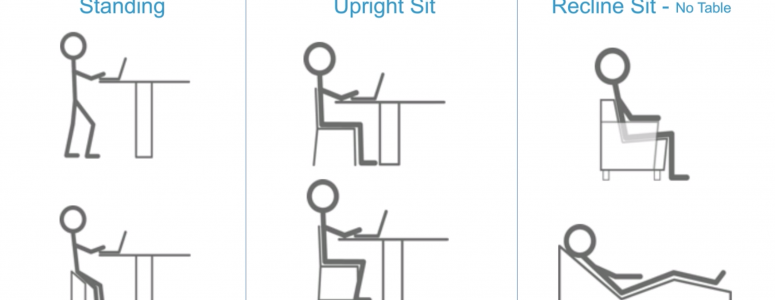
Libraries need to be prepared to support a huge variety of practical needs at once. Whether it’s providing enough space for a full day of studying, making it easy for a group of people to meet or work on a project, or simply providing an easy place for parents to read with their kids, quality chairs are an essential part of someone’s experience in a library.
In the previous post of our Library Seating series, we discussed how to observe and investigate activity patterns within a space, which is how people are already using a space. This is crucial so you can have library seating available that best supports a specific activity.
When somebody sits in a seat that’s designed for a given task, it’s easy to see their comfort level is greater than it would be in a seat not intended for that use. Spaces may change, but instinctual activity patterns do not, so library chairs that are not suitable to a specific activity pattern usually just end up being unused.
As times have changed, mobile work has become commonplace. Since many of us are able to accomplish tasks from anywhere, we need to consider what the best ways to work are for a specific task. And our job is to provide the best seating options for our library patrons.
What Are the Different Types of Library Seating?
To start off the discussion of selecting the right library chairs, we first need to clarify what the various options are for library seating. There are three main categories: Standing/Perching, Upright Sit, and Recline Sit.
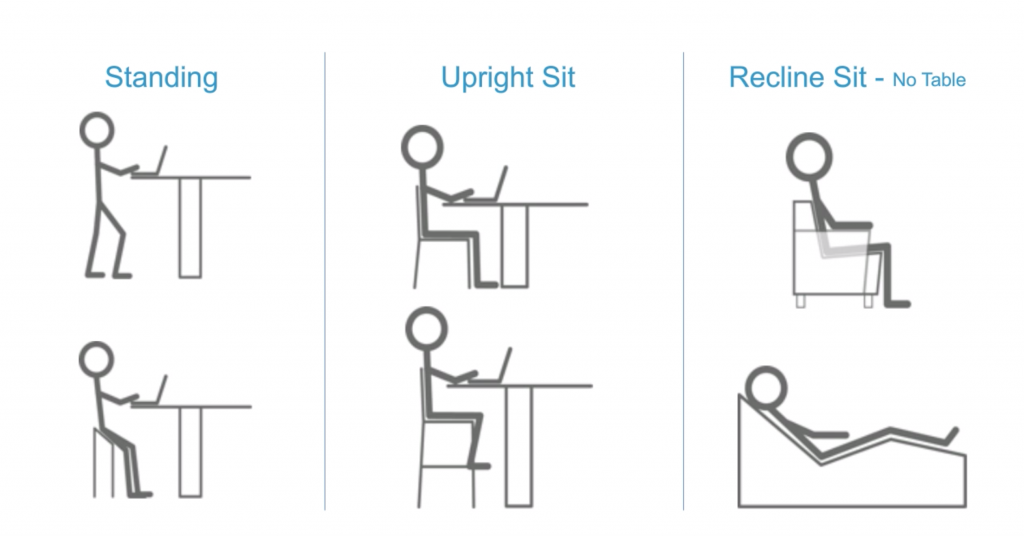
Each of these types of seating support various activity patterns and lengths of work. It’s important to recognize the differences to understand what chairs to pair with each task. Here’s a great visual overview of the amount of time it takes for a library patron to comfortably accomplish various tasks:
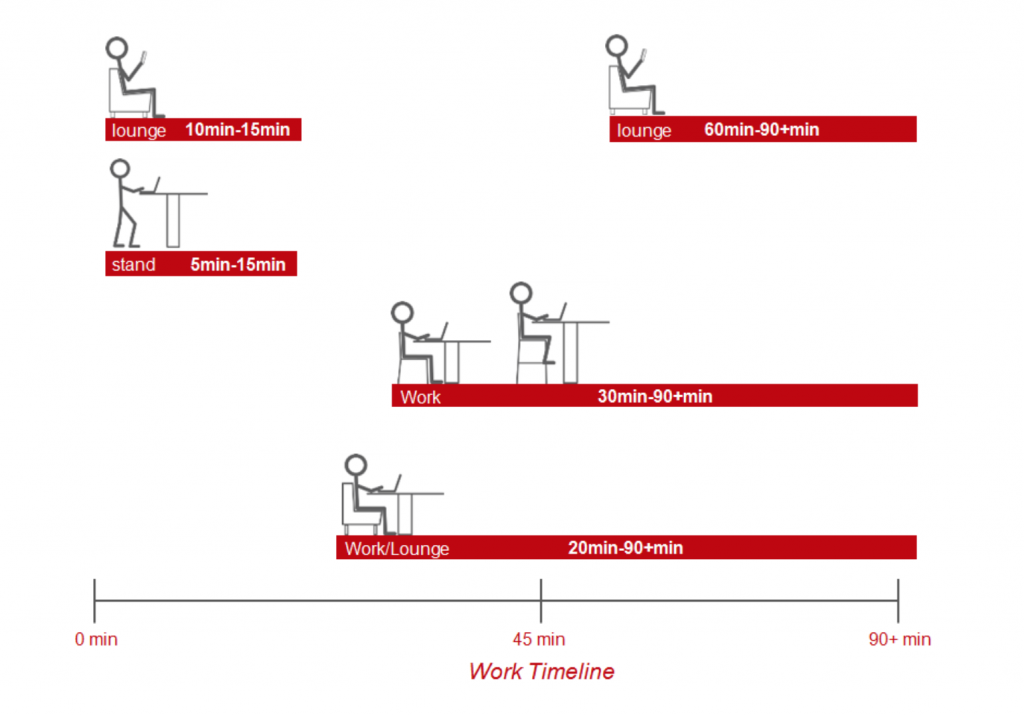
To take this further than time spent on a task, let’s break each seating style down by the activity patterns they best support.
Standing/Perching Library Furniture
First, there’s standing library furniture and the modern style of perching. Both of these promote a healthy, open body posture, but aren’t typically sustained for a long period of time.
Standing library furniture best supports shorter tasks, such as checking email, looking information up online, or a brief meeting or social gathering.

Perching furniture, on the other hand, allows your patrons to work on something for a slightly longer length of time, and supports a wider variety of activities. This seating style is great for social gatherings, computer work, mobile activities, and in some cases multi-item work. Again, this provides a great angle for healthy posture, but is not as comfortable for longer activities as traditional seating, and is sometimes less utilized in public spaces.
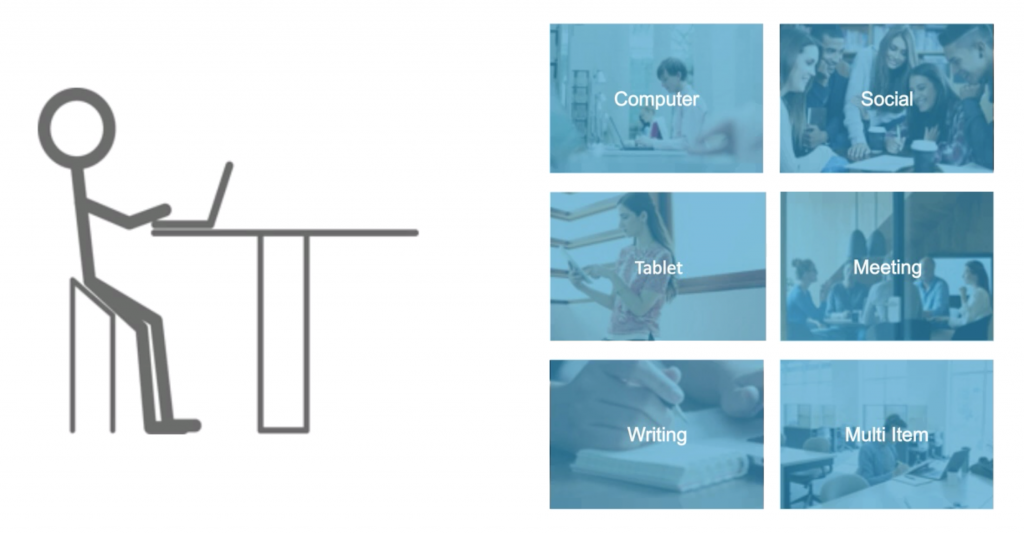
Upright Sit – Traditional Library Chairs
Second, we come to the classic table-and-chair style, which is the most traditional and popular form of library seating. While this requires a slightly more closed body posture, it is by far the most versatile seating option for libraries. This seating style supports multi-item tasks like studying, digital tasks, various meetings or social gatherings, and writing activities.
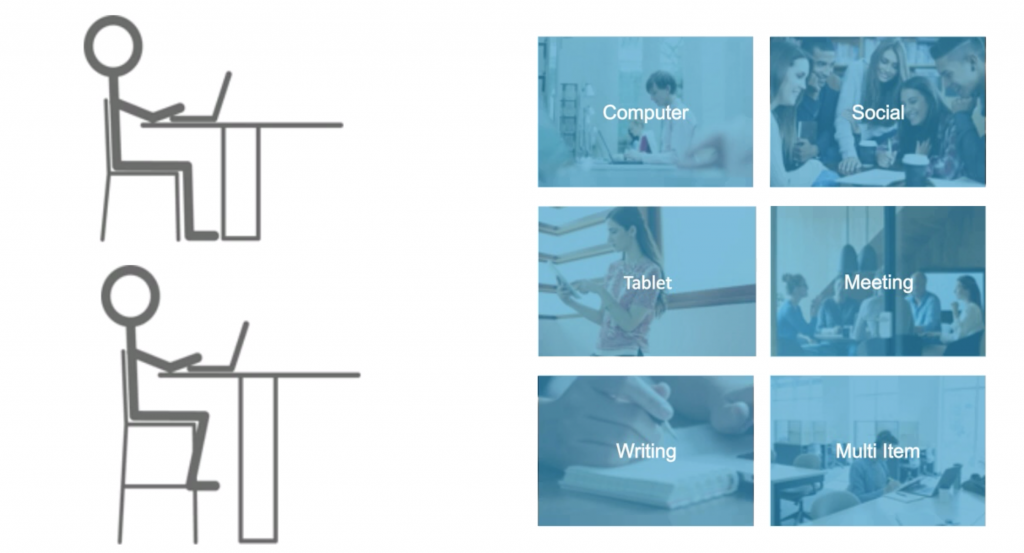
Recline Sit – Lounge Library Chairs
Finally, we have our lounge library furniture, which is another common form of seating found in most libraries. Lounge furniture is not ideal for work-style activities because it does not provide the proper posture support to be used in conjunction with a table. As such, lounge furniture is perfect for reading, phone/tablet activities, and social meetings.
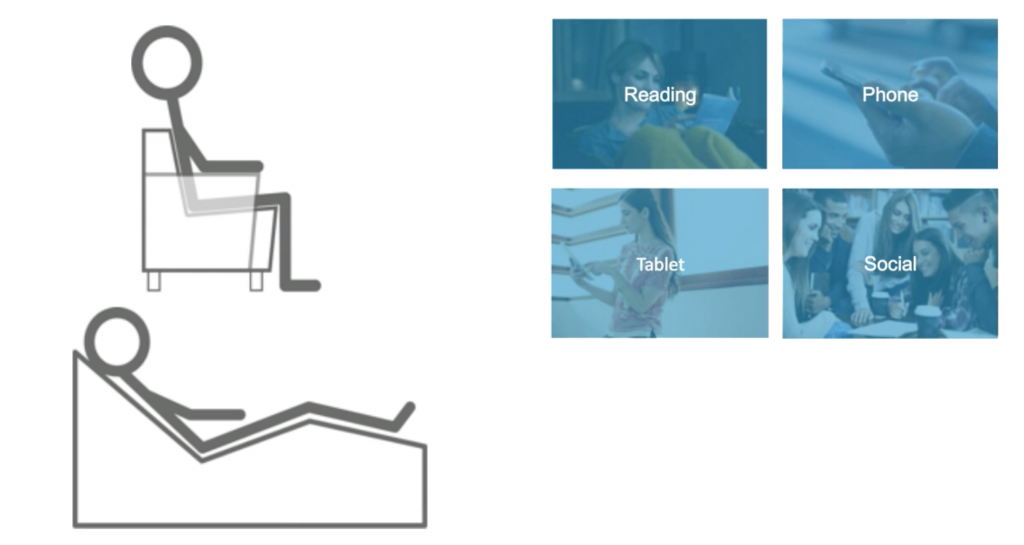
Each style of library seating is best suited to specific activity patterns, which is why it is so important to understand the current patterns of use by your patrons. By doing this, you can create an intentional space, communicating to your community that you care and that your facility is there to meet their needs. And that’s our goal.
If you’d like to learn more about each of these seating styles, take a moment to connect with our team. We’d love to partner with you in thinking through the seating options in your space!
This brings us to the next topic in our Library Seating series: aesthetics. How do you intentionally combine the function of furniture with the form to create a welcoming environment for your patrons?
PREVIOUS POST | Furnishing a Space: How to Observe & Investigate Patterns of Use
NEXT POST | Combining Form & Function: How to Make a Library Feel Welcoming Through Intentional Seating
